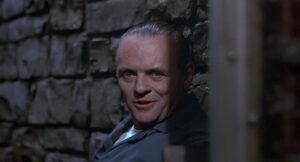The Horror of Dolores Roach follows Dolores Roach, a down-on-her-luck ex-convict who returns to her hometown after 16 years in prison to find that the world she’d known has moved on without her. Frustrated by this alien existence she’d been thrust into, she returns to the apartment she had previously shared with her traitorous ex-boyfriend before her arrest to find a young couple living there. Her presence in their apartment frazzles the couple. So much so that before she leaves, Dolores confesses that she hoped she hadn’t scared them as that wasn’t the kind of person she wanted to be.
Dolores’ revelation is offered as a foreshadowing of the woman she eventually becomes, even as she tries to cling to this side of herself, this part of herself that she deems good. However, as the show progresses, it becomes increasingly apparent that that part of Dolores was never meant to survive.
For a brief hopeful moment in the beginning, Dolores works toward being a better version of herself. She gets a roof over her head living beneath a restaurant with her old friend Luis. She starts making an income by giving massages in her room. She even plans on going back to school. But then the other shoe drops.
Luis’ landlord, a swaggering, racist, misogynistic sloth of a man, stops by demanding the rent. It is clear from here on that Dolores’ penchant for violence is about to implode.
Warning…spoilers!
The switch from the “real” Dolores, the good Dolores, the Dolores she wishes she was, is almost instantaneous. The whiplash from so much change right out of prison snaps her all at once into a frenzy. She is angry, rightfully so, but more than that, Dolores is opportunistic of the situations as they present themselves. Or better yet, they willingly lay themselves on her massage table. Creepy, disgusting landlord? Strangle him. Annoying neighbor demanding a back rub? Snap her neck. Drug-hazed lover who won’t leave her alone? Melt his face in hot oil.
Dolores kills even when she doesn’t have to. She’s like a toddler playing with her dolls, pulling their limbs and popping off their heads on a blood-addled whim. All the while hanging on to the scraps of her “good” self.
And when the consequences of her actions come back to haunt her, she points the finger outward. To the world that was cruel to her, her ex-boyfriend who betrayed her, and Luis, especially Luis. The cannibalistic chef who kept trophies of her victims. Luis, who had hidden her blood-soaked darkness in deep-fried pastries. Luis, her lover who she repeatedly blamed for enabling her bad habit. “You should have stopped me,” she says to him in what would be their last scene together. “Someone should have stopped me!”
Ultimately, Dolores acknowledges that she is not a good person anymore. She gives up the pretense of mulling over the consequences of her actions. Where at first she had been inconsolable for taking a life, now she relishes at the thought of it. She’s given herself fully to the blood lust. In the end, there’s only one side to Dolores Roach; the death-wielding force that is desperate to be stopped by someone, anyone (unless she kills them first).





